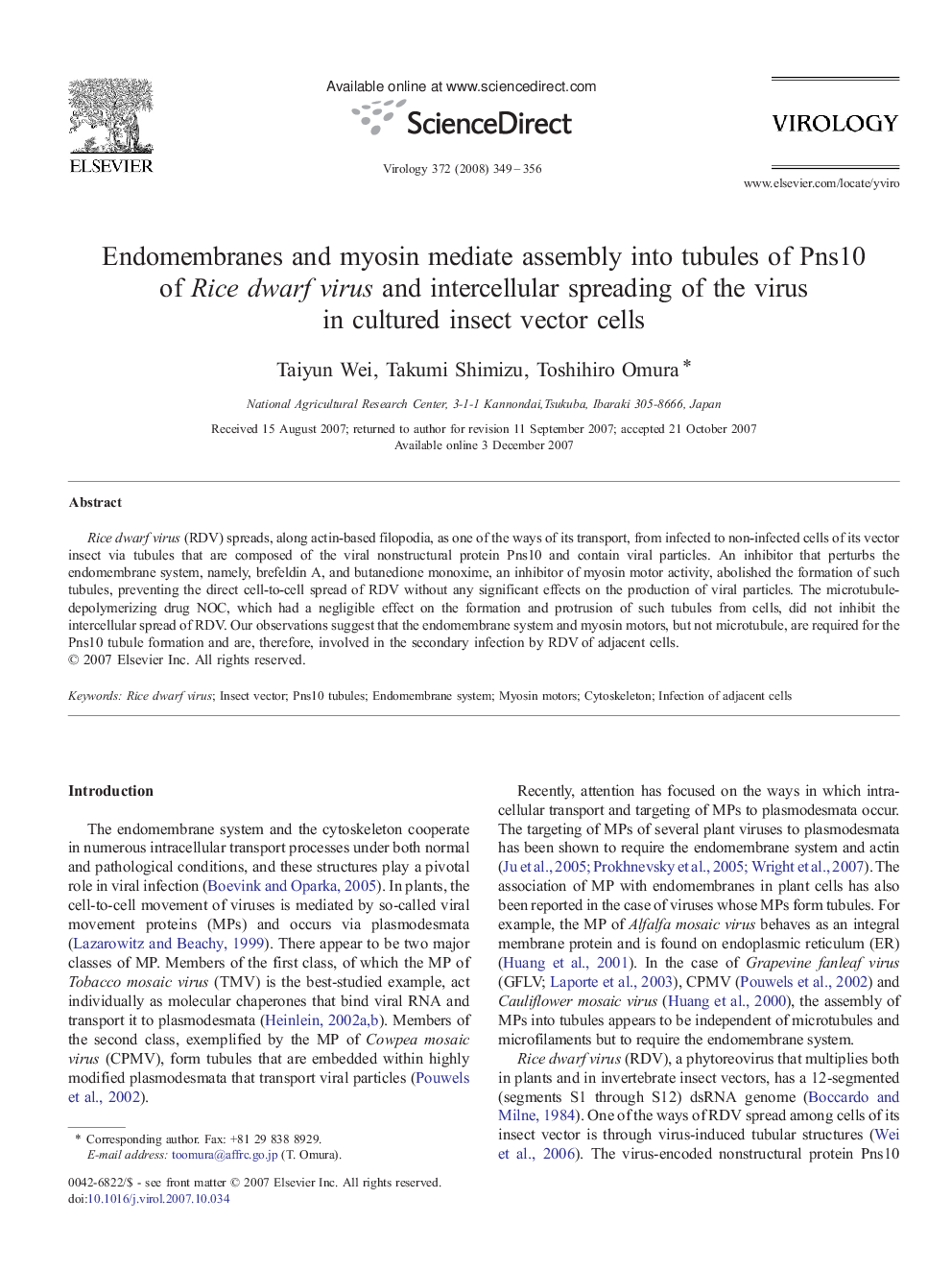| Article ID | Journal | Published Year | Pages | File Type |
|---|---|---|---|---|
| 3426053 | Virology | 2008 | 8 Pages |
Rice dwarf virus (RDV) spreads, along actin-based filopodia, as one of the ways of its transport, from infected to non-infected cells of its vector insect via tubules that are composed of the viral nonstructural protein Pns10 and contain viral particles. An inhibitor that perturbs the endomembrane system, namely, brefeldin A, and butanedione monoxime, an inhibitor of myosin motor activity, abolished the formation of such tubules, preventing the direct cell-to-cell spread of RDV without any significant effects on the production of viral particles. The microtubule-depolymerizing drug NOC, which had a negligible effect on the formation and protrusion of such tubules from cells, did not inhibit the intercellular spread of RDV. Our observations suggest that the endomembrane system and myosin motors, but not microtubule, are required for the Pns10 tubule formation and are, therefore, involved in the secondary infection by RDV of adjacent cells.
